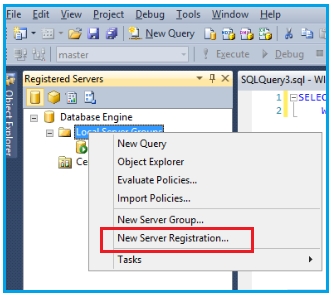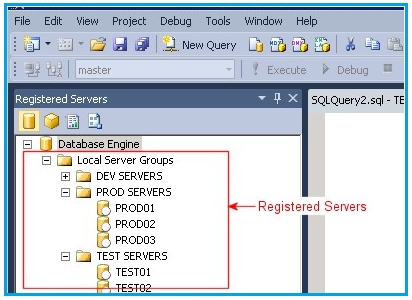
October 5, 2023 08:49 by
 Peter
PeterWhat exactly are Registered Servers?
Registered Servers is a feature in SQL Server Management Studio (SSMS) that enables database administrators (DBAs) and developers to manage and arrange connections to many SQL Server instances and other database server types in a centralized manner. It's a useful tool for streamlining server administration, running queries across numerous servers, and doing administrative duties quickly.
What exactly are Registered Servers?
- Registered Servers is a feature in SQL Server Management Studio (SSMS) that enables database administrators (DBAs) and developers to manage and arrange connections to many SQL Server instances and other database server types in a centralized manner. It's a useful tool for streamlining server administration, running queries across numerous servers, and doing administrative duties quickly.
- Grouping and Organization: Registered Servers can be organized into server groups, making it easier to categorize and manage servers based on criteria like development, production, or specific projects.
- Quick Access to Servers: With Registered Servers, you can quickly connect to a server by selecting it from the list without the need to enter connection details each time you want to connect.
- Server-Level Configuration: You can set server-level properties and configurations for multiple servers at once, simplifying tasks like changing compatibility levels, managing security settings, or configuring maintenance plans.
Benefits of Registered Servers
- Time-Saving: One of the primary benefits is time-saving. You can perform actions across multiple servers with a single action, reducing repetitive tasks and increasing efficiency.
- Organization: Registered Servers provide a structured way to organize and group servers, making it easier to manage large server environments.
- Consistency: By applying configurations or executing scripts consistently across servers, you can maintain uniformity in your database environment.
- Ease of Access: It's more convenient to select a registered server from a list than to remember or enter connection details manually.
Limitations of Registered Servers
- SSMS Dependency: Registered Servers are a feature of SQL Server Management Studio. It's not available in other database management tools or applications. If you switch to a different tool, you may not have access to your registered servers.
- No Server Monitoring: While you can connect to servers, execute queries, and perform administrative tasks, Registered Servers do not provide real-time server monitoring or alerting capabilities. For monitoring purposes, you'd need to use additional tools like SQL Server Agent or third-party monitoring solutions.
- Limited to SQL Server: While Registered Servers support various SQL Server versions and editions, they are primarily designed for SQL Server instances. Managing servers of other database platforms may require different tools or extensions.
In SSMS, how do I use Registered Servers?
Right-click on the "Local Server Groups" folder and select "New Server Registration" to add a new server to Registered Servers.

In the "New Server Registration" dialog box, enter the server name, authentication method, and login credentials.
Once the server is added, it will appear in the Registered Servers window, where you can organize and manage your connections.
To run a query against multiple servers, select the servers you want to include and right-click on them. Then, select "New Query" to open a new query window with all the selected servers included.
After running the query, the results will be displayed in a single window, making it easy to compare and analyze the data from multiple servers.

Summary
SQL Server Management Studio's Registered Servers functionality is useful for centralizing server management, enhancing organization, and simplifying administrative operations across several database servers. It is especially useful for DBAs and developers that operate in situations with several SQL Server instances.